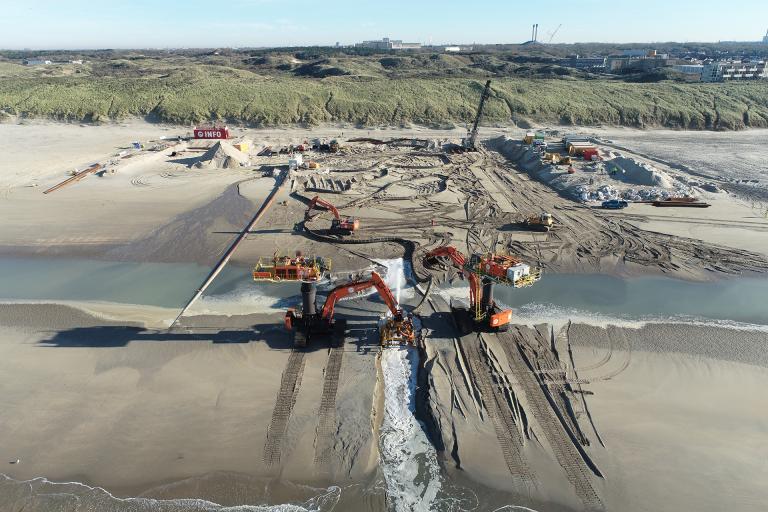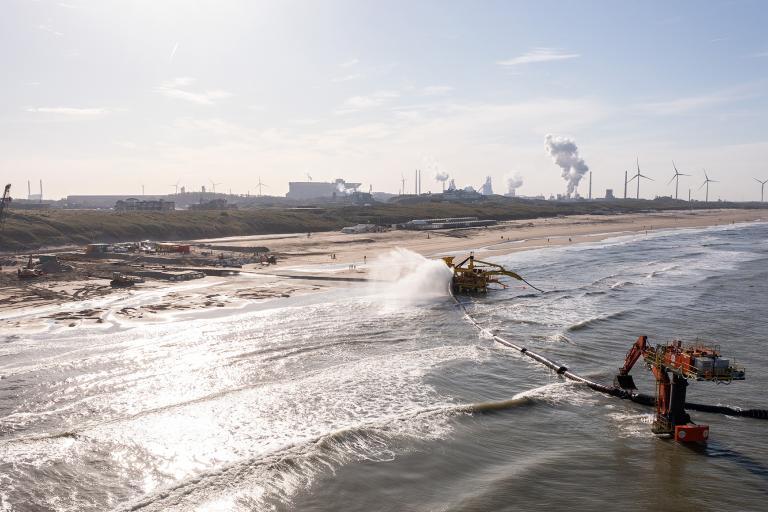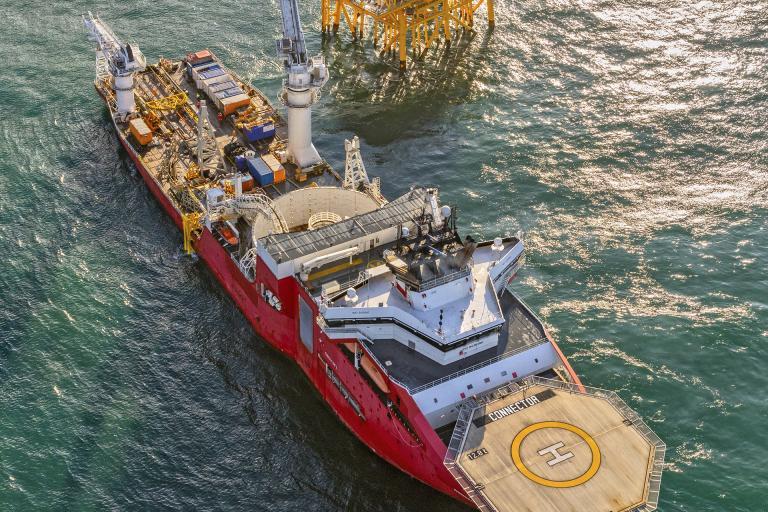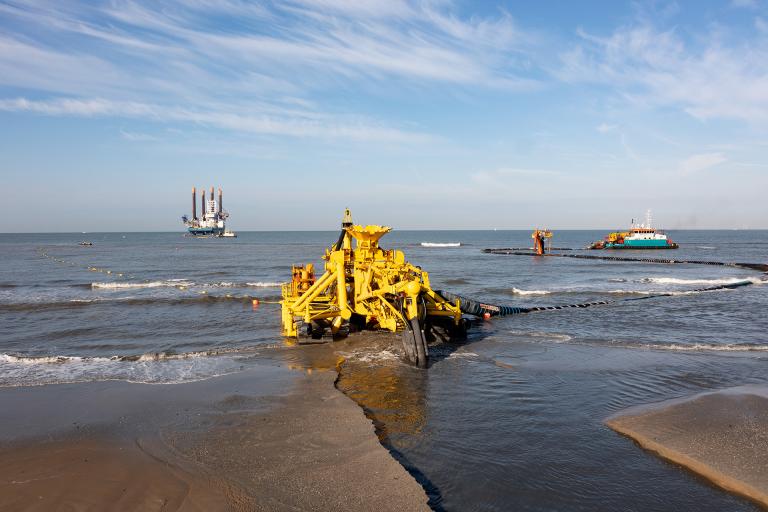Rolling out cables for the future
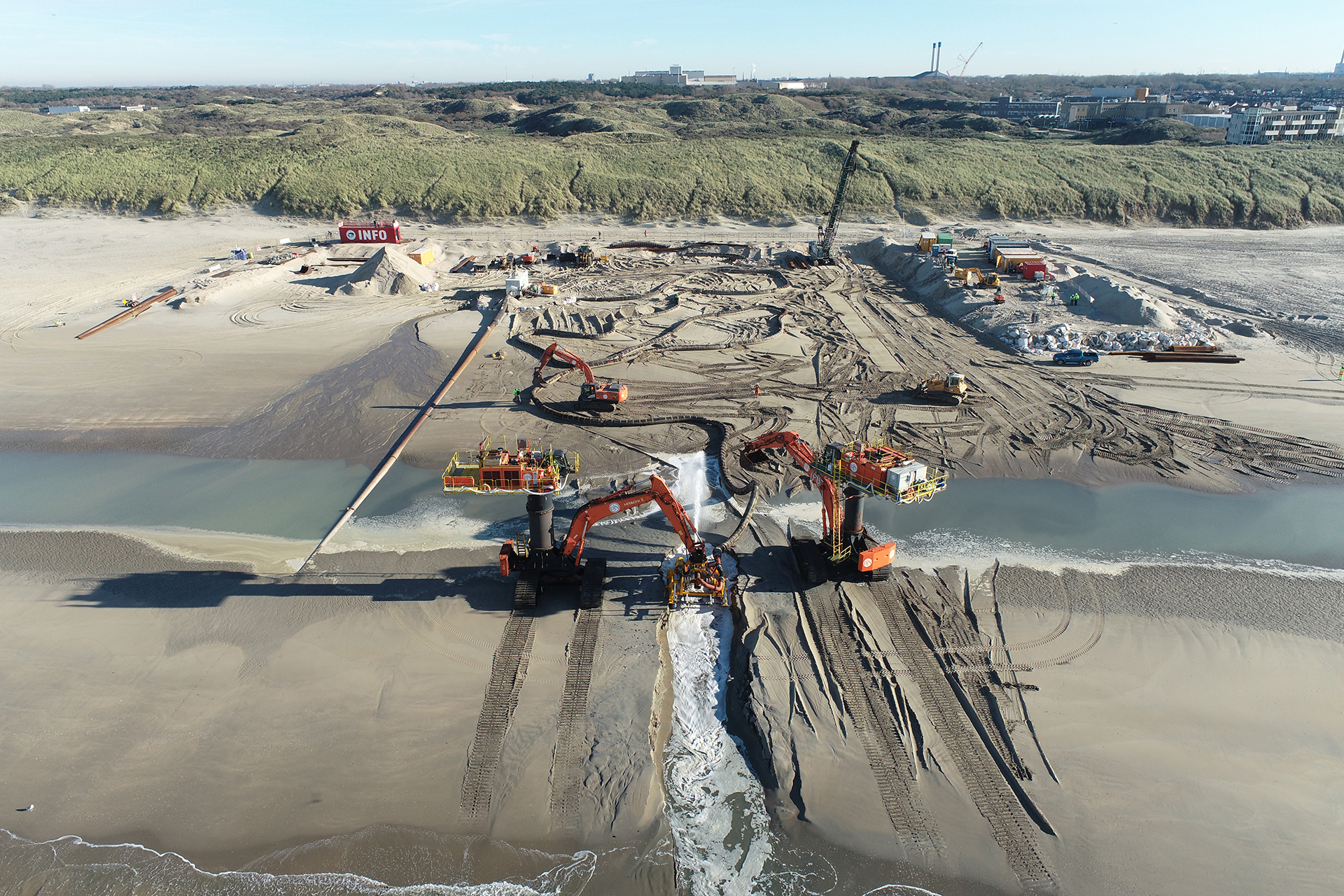
Double interview with Wouter Vermeersch and Wim Dhont, Managers Offshore Cables
A jump-start
How did Jan De Nul, traditionally a dredging contractor and civil entrepreneur, end up in the offshore cable market?
Wouter Vermeersch: "For that, we have to go back to the early 1990s. Back then, we deployed our dredging vessels to dredge trenches for pipelines, for instance. A first investment in our offshore fleet was the construction of two fall pipe vessels. These allowed us to install rocks for protecting underwater infrastructure.
In 2012, we were working on a project in the Far East, depositing rocks on the seabed. It turned out that the client was at a loss, as they did not yet have a party to install their umbilical cables. We then helped them out by installing the umbilicals with our fall pipe vessel. Honestly, we had a taste for it right away. There was a lot of common ground with our core business, so we were keen to further explore the possibilities."
When did you feel 'Now we're getting somewhere'?
Wouter Vermeersch: "That actually came pretty soon. In 2013, Belgian green energy company Parkwind was looking for a partner to install a 5,200-tonnes export cable for Northwind, a wind farm in the Belgian North Sea. We signed on and immediately converted our side stone vessel Willem de Vlamingh into a cable-laying vessel. Incidentally, even before we had completed the project, we took the decision to invest in a second cable-laying vessel. That became the Isaac Newton, completely designed and built in-house, and delivered in 2015."
"The media often highlights our ability to install offshore wind turbines. But that activity started only years after our first cable-laying projects."
Wouter Vermeersch, Manager Offshore Cables at Jan De Nul Group
Our vision bears fruit
Over the years, Jan De Nul has been gradually expanding systematically. What does the offer consist of today?
Wim Dhont: We explicitly want to be an all-round partner. This means that we must be able to do more than just flawlessly install cables. Today, we have the expertise and the equipment to bring cables safely on land and protect them over their entire length under water. Clients who come to us can rest assured. We take care of everything. The only thing we don't do ourselves is manufacturing the cables.”
These visionary decisions have served the group well. The offshore energy market is flourishing like never before. What are the ambitions?
Wouter Vermeersch: "Over the next two decades, offshore renewable energy projects will remain high on the agenda. The connection to land is crucial to get the extracted energy to the end user. However, long undersea cables called interconnectors are connecting countries. While we thought at first the gas and oil markets would die out, nothing could be further from the truth. Those players are also playing the green card, so orders keep coming in from that corner too. So there is no shortage of cable projects."
Wim Dhont: "Above all, we want to remain trendsetters. As the world's largest independent offshore cable installer, we are constantly pushing our own boundaries. By way of illustration, in 2022 we embarked on a prestige project in Abu Dhabi. There, we are installing and protecting 1,000 km of cables to supply offshore oil installations with renewable power from the mainland and reduce their impact on the environment."
"Protecting and burying the cables is the most difficult part. But just because seabed manipulation is so close to our core, we excel at it."
Wim Dhont, Manager Offshore Cables at Jan De Nul Group
Team of experts and unique fleet make all the difference
Who are the competitors in this market and how does Jan De Nul differentiate itself?
Wouter Vermeersch: "Meanwhile, our main competitors from the dredging sector have also invested in their own cable-laying vessels. There are cable manufacturers who install their own cables, but they have less supporting capacity to protect the cables. We have as many as three full-fledged cable-laying vessels and an extensive dredging and rock installation fleet to do that."
Wim Dhont: "It is not just size, but also quality and versatility that set us apart and thus make us unique. Besides the three complementary cable-laying vessels, our fleet consists of innovative cable excavators and amphibious cranes. In 2022, we also added an offshore auxiliary vessel: the Symphony. The latter will be the mother ship of the Swordfish, our new subsea burial robot. Our fleet is unique, allows us to operate all year round, also in adverse weather conditions, and thus ensures that we can respect tight schedules."
Wouter Vermeersch: "We even go so far as to develop and market new equipment for some of our projects. Think of our Moonfish, a trencher that we designed and built in-house to be able to bury cables up to 8 m deep for the Hollandse Kust Noord and West Alpha project – a strict prerequisite from the local government to ensure a long service life. The knowledge our experts gain with such undertakings is also a huge asset. Clients know that we start from their needs and wishes, not from our offer."
Our cable expertise in practice
Hollandse Kust Noord and West Alpha Project
On behalf of TenneT, Jan De Nul is transporting, installing and protecting the high-voltage cables connecting the transformer stations of the offshore wind farms with the onshore electricity grid. We did this in three phases, the first of which completed in 2022. In all, we are talking about four cable systems (220 kV) with a combined length of 230 km. On the beach and near the coast, these will be buried by the trencher Moonfish at a depth of 8 m, further out at sea our cable excavator UTV1200 will take over the job and bury the cables at a depth of 3 m. We also cover junctions on the cable route with stones and expertly remove sand waves and banks.
Interesting projects in the pipeline
Greenlink Interconnector: installation of two high-voltage cables and a fibre-optic cable to connect the Irish and British power grid with one another.
Vineyard Project: supply and installation of 210 km of 66kV cables to connect GE Haliade-X turbines.
Lightning Project: design, installation and protection of some 1,000 km of cables between Abu Dhabi and the islands of Al Ghallan and Das.
